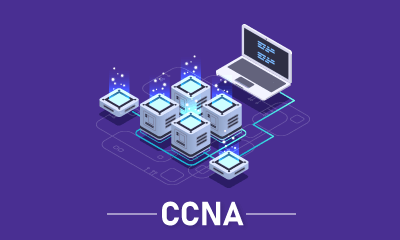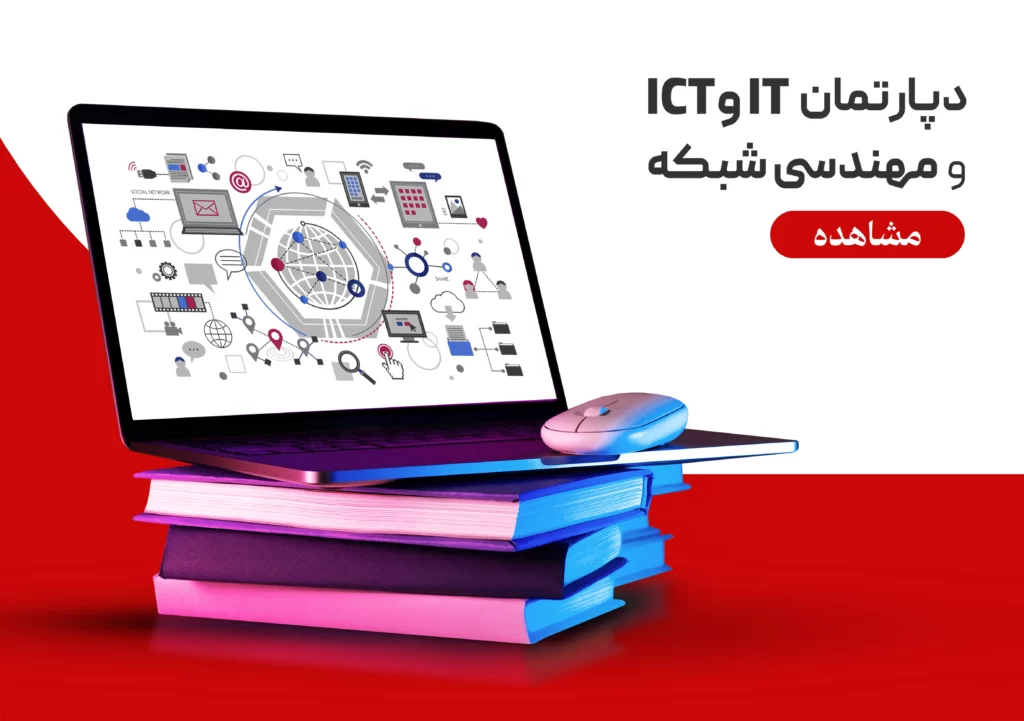آموزش CCNA(Cisco Certified Network Associate) در تبریز
CCNA(Cisco Certified Network Associate)
مدرك CCNA که اولین و در واقع پیش نیاز سایر مدارك Cisco است، شامل اطلاعات پايه اى در مورد شبکه LAN و WAN و نحوه نصب و راه اندازى اين نوع شبكه ها تا سطح كوچک می باشد. در دوره CCNA مفاهيم سوييچينگ و روتينگ و همچنين نحوه نصب و راه اندازى سوييچ ها و روترهاى Cisco در لايه هاى دوم و سوم شبكه مورد بررسى قرار مى گيرند. ضمن اين كه پروتكل هاى ارتباطى شبكه هم تا سطح بالاترى نسبت به مدرك Network+ آموزش داده مى شود. دوره CCNA اولین بار در شمالغرب کشور در سال 1381 در مجتمع فنی تبریز برگزار گردید که تا کنون به صورت مداوم ادامه یافته است. مجتمع فنی تبریز كسب اين مدرك را به كسانى كه قصد دارند به عنوان همكار با متخصصان شبكه در نصب و راه اندازى و رفع عيب شبكه استخدام شوند، توصيه مى نمايد. مشتریان و علاقمندان بسیاری از سازمان ها، ادارات و شرکت ها در این دوره ها شرکت کرده اند و حتی برخی از آنها موفق به اخذ مدارک بین المللی نیز شده اند. در حال حاضر برای متخصصان شبکه، مدرک CCNA به عنوان یکی از ملزومات اصلی برای استخدام و شروع به کار آنها در شرکت ها توسط موسسات کاریابی اعلام می شود. در تمام سایت های کاریابی با جستجوی کلمات کلیدی نام این مدارک از میزان حقوق بالای پیشنهادی به دارندگان آن تعجب خواهید کرد.
| نام دوره آموزشی | مدت (ساعت) | شهریه (ریال) |
|---|---|---|
| (CCNA (200-301 | 70 (35 جلسه 1/5 ساعته) | 110,000,000 |
سرفصل
• Exploring the Functions of Networking
• Introducing the Host-to-Host Communications Model
• Operating Cisco IOS Software Lecture Introducing LANs
• Exploring the TCP/IP Link Layer
• Starting a Switch
• Introducing the TCP/IP Internet Layer, IPv4 Addressing, and Subnets
• Explaining the TCP/IP Transport Layer and Application Layer
• Exploring the Functions of Routing
• Configuring a Cisco Router
• Exploring the Packet Delivery Process
• Troubleshooting a Simple Network
• Introducing Basic IPv6
• Configuring Static Routing
• Implementing VLANs and Trunks
• Routing Between VLANs
• Introducing OSPF
• Building Redundant Switched Topologies
• Improving Redundant Switched Topologies with EtherChannel
• Exploring Layer 3 Redundancy
• Introducing WAN Technologies
• Explaining Basics of ACL
• Enabling Internet Connectivity
• Introducing QoS
• Explaining Wireless Fundamentals
• Introducing Architectures and Virtualization
• Explaining the Evolution of Intelligent Networks
• Introducing System Monitoring
• Managing Cisco Devices
• Examining the Security Threat Landscape
• Implementing Threat Defense Technologies
• Securing Administrative Access
• mplementing Device Hardening
Lab Outline
• Get Started with Cisco Command-Line Interface (CLI)
• Observe How a Switch Operates
• Perform Basic Switch Configuration
• Implement the Initial Switch Configuration
• Inspect TCP/IP Applications
• Configure an Interface on a Cisco Router
• Configure and Verify Layer 2 Discovery Protocols
• Implement an Initial Router Configuration
• Configure Default Gateway
• Explore Packet Forwarding
• Troubleshoot Switch Media and Port Issues
• Troubleshoot Port Duplex Issues
• Configure Basic IPv6 Connectivity
• Configure and Verify IPv4 Static Routes
• Configure IPv6 Static Routes
• Implement IPv4 Static Routing
• Implement IPv6 Static Routing
• Configure VLAN and Trunk
• Troubleshoot VLANs and Trunk Learning @Cisco Course overview Page 5 of 5
• Configure a Router on a Stick
Implement Multiple VLANs and Basic Routing Between the VLANs
• Configure and Verify Single-Area OSPF
• Configure and Verify EtherChannel
• Improve Redundant Switched Topologies with EtherChannel
• Configure and Verify IPv4 ACLs
• Implement Numbered and Named IPv4 ACLs
• Configure a Provider-Assigned IPv4 Address
• Configure Static NAT
• Configure Dynamic NAT and Port Address Translation (PAT)
• Implement PAT
• Log into the WLC
• Monitor the WLC
• Configure a Dynamic (VLAN) Interface
• Configure a DHCP Scope
• Configure a WLAN
• Define a Remote Access Dial-In User Service (RADIUS) Server
• Explore Management Options
• Explore the Cisco DNA™ Center
• Configure and Verify NTP
• Configure System Message Logging
• Create the Cisco IOS Image Backup
• Upgrade Cisco IOS Image
• Configure WLAN Using Wi-Fi Protected Access 2 (WPA2) Pre-Shared Key (PSK) Using the GUI
• Secure Console and Remote Access
Enable and Limit Remote Access Connectivity
• Secure Device Administrative Access
• Configure and Verify Port Security
• Implement Device Hardening





